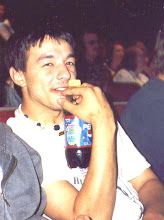Drug abuse puts drain on local hospitals
www.arkansasleader.com
By SARA GREENE
Leader staff writer
While the number of meth-amphetamine busts dropped by almost 50 percent last year in Arkansas, meth-related hospital admissions continue to climb.
Since Act 256 went into effect last March requiring pseudoephedrine products be taken off the shelves and sold by a pharmacist, obtaining meth ingredients has become more difficult. The monthly average for meth lab busts in Arkansas dropped from 101 in 2004 to 55 in 2005, said Sen. Mark Pryor during a national town hall meeting on methamphetamine awareness held in Washington on Monday.
“This approach is working and we need to pass federal legislation, such as Senate Bill 103 so that every state takes the same steps and crossing state lines won’t enable anyone to re-supply their meth lab,” Pryor said.
The reduction in the number of large meth labs has resulted in users making the drug in smaller quantities at home and in the ice, crystal methamphetamine imported from Mexico.
“We see an average of 102 patients a day and of those, four would be treated for meth-related complications,” said Sara Koehler, marketing coordinator for White County Medical Center in Searcy.
Treating meth-related cases in the emergency room puts a strain on resources at all hospitals, according to Koehler.
“A lot of these people who are addicted to meth are not in a good financial position because of their addiction. They do not have insurance and it drains our charity care resources,” Koehler said.
“We’ve treated patients addicted to meth that ranged from 12 years old to 60.”
Sherry Clements, emergency room manager at Rebsamen Medical Center, says of the 2,000 patients that pass through the emergency room in a typical month, roughly 5 to 6 percent are seeking treatment related to drug use.
“We haven’t been tracking the numbers on meth cases specifically because the symptom can be because of other drugs and reasons,” Clements said. “I think we probably have a lot more than what we really know.”
Patients come in unresponsive and jittery, and some are suspected overdoses after mixing meth with other medications.
“Lots of meth users will have sores because the meth makes them pick at their skin,” Clements said of the common meth symptom. “You see a lot of the same patients over and over, and because of patient confidentiality you can’t call the police.”
Even with the decline in meth lab busts, Clements says Rebsamen Medical Center still treats people for burns related to meth lab explosions.
“One thing we’ll see is people coming in with suspicious burns and their story on how the burn happened just doesn’t add up,” she said.
The types of meth burns emergency room personnel treat are most often on the face, hands and thighs, Clements said.
Sometimes the meth user will come in several days after being burned and by that time infection has set in. The most severe burn cases are sent to the burn unit at Arkansas Children’s Hospital in Little Rock.
“Our problem with quantifying the number of burn patients from meth labs is that they won’t come in saying ‘my meth lab exploded,’ it will be a water heater explosion or another excuse,” said Jimmy Parks, a nurse and outreach coordinator for the burn unit at Arkansas Children’s Hospital.
From July 2004 to June 2005, Parks said Arkansas Children’s Hospital treated 145 adults in the burn unit. Of those, Parks estimates between 5 and 15 percent were either suspected or confirmed burned during a meth lab explosion.
“We don’t seem to be getting as many as we used to. Meth lab explosions don’t make a large number of our patients but those who are (in meth lab explosions) have pretty bad injuries,” Parks said.
The National Association of Counties recently released “The Effect of Meth Abuse on Hospital Emergency Rooms,” a 2005 survey of 200 emergency room officials in 39 states.
In the survey, 83 percent of the emergency room officials reported that people requiring treatment for a meth-related emergency are often uninsured.
Fifty-six percent of the hospitals reported that costs have increased because of the growing use of meth.


1 Comments:
oyus guys are faggots meth is great
Post a Comment
Subscribe to Post Comments [Atom]
<< Home